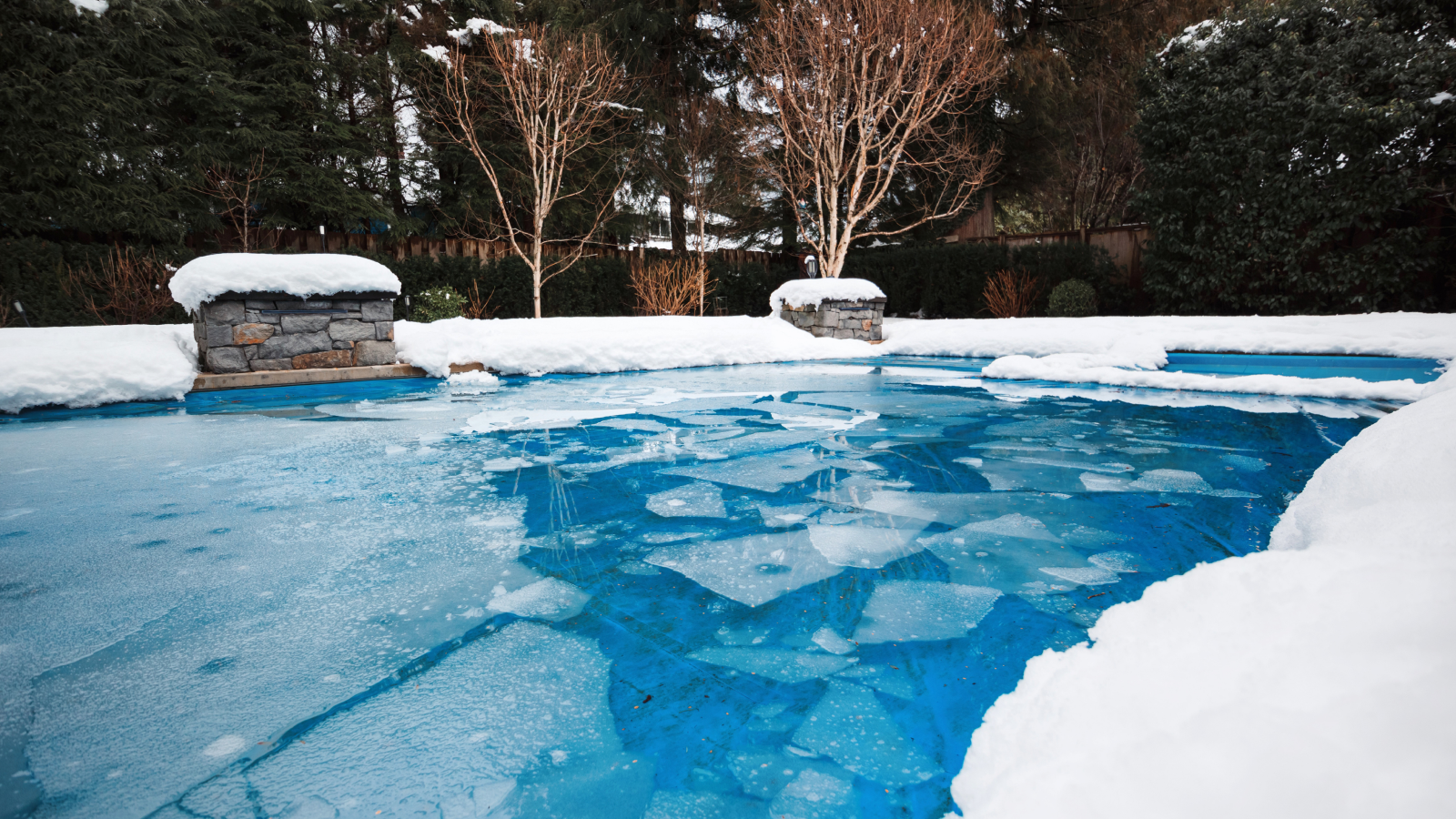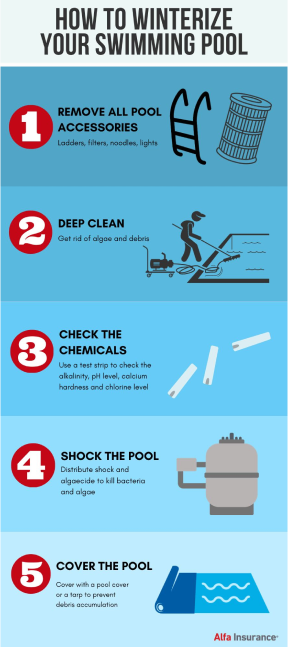5 Steps on How to Winterize Your Inground Swimming Pool

As pool owners know, keeping up with a swimming pool can be a full-time job. The wintertime might seem like the easiest time to have a pool, but if not done correctly it can end up in a disaster.
You might be wondering when you should start to winterize your pool. The timing of when to close your pool for winter will depend on where you live. In the South, the temps can be in the 70s in October, so it may be November before it’s necessary. When the weather forecast shows it will dip below 65 degrees, you should start the process. It’s very important to keep an eye on the weather changes. Starting this process too early can cause more problems than needed. If your pool gets covered up while the weather is still warm, it can get infested with algae, which thrives in warm weather.
Is winterizing a pool necessary?
Yes, it’s important to properly winterize your pool to prevent damage to expensive equipment and to maintain a healthy pool environment for when it gets warm again. If you go through the effort of taking care of your pool before the winter, you’ll be so grateful in the spring when you can enjoy the pool more quickly when the weather turns warm again. While many people cover their pool in the winter, you don’t have to if you choose to maintain it year-round. You’ll need to continue to clean it, put chemicals in it, and run the pump at night and when it is freezing temperatures. Running the pump is key; otherwise, it could risk freezing and causing damage.
Should you drain your pool for winter?
You may think draining the pool in the off season makes a lot of sense, but it’s not recommended. An empty pool can lead to a dried-out, cracked liner, which is pricey to replace. When you’re ready to refill the pool, you’ll be looking at a hefty water bill, too. Following the right winterizing steps is the best way to care for your pool during winter.
How do you close a pool for winter?
The process to prep your inground pool for winter can vary based on your location and your pool’s needs. It’s not a bad idea to reach out to your local pool supply store, but we’ll cover the basics here. Below are five steps on how to winterize your pool.
Download How To Winterize Your Swimming Pool

How to Winterize Your Swimming Pool
Step 1: Remove all pool accessories
If you have a designated area you like to keep all pool accessories, now is a good time to store them for the off season. Make sure you rinse them off before storing to get off all the chlorine. This could also be a good time to go through the items you have and throw out the ones you don’t need anymore.
Step 2: Deep clean
Start by removing all the leaves and debris that might be floating on top of the water. Run the pool vacuum to ensure all debris on the bottom is clean and do one last sweep for good measure.
Step 3: Make sure the chemicals are right
It might seem counterproductive to treat your pool right before you close for the season but doing this will help prevent build-up and algae growth while not being used. To check the chemicals and make sure they are balanced, use a test strip and the guide on the back of the bottle.
On the back of the test strip bottle, there will be lines that show what the color should be if the water is ideal or what it will look if the water is not ideal.
Check the color for alkalinity, pH level, calcium hardness and the chlorine level. Most pool stores will allow you to bring in a water bottle of your pool water and they will test it for free. They will tell you what you need to add or if there is too much of something. This is something to consider when prepping your pool for winter.
Step 4: Shock the pool
This might need to be done a few days before closing the pool. Adding shock and algaecide to your pool will kill bacteria and algae. Read the instructions on the back of the package to ensure you are distributing it correctly.
Step 5: Cover the pool
Now it’s time to say goodbye for the season! Deciding which cover to use is entirely up to you, just make sure your cover has a tight fit with no holes or tears.
While it’s not necessary to put a cover over your pool in the winter, it is highly recommended. Since you won’t be swimming in the pool in the winter months, it won’t be getting cleaned as much so leaving it uncovered can bring in debris which can accumulate over time causing your pool to get “swampy.”
Covers can be expensive so if that’s not in the budget, consider putting a large tarp over the pool and securing it down with bricks until you are able to buy a real cover. Throughout the winter months, keep an eye on the pool cover and pool area. Remove any debris that might be on the cover or around it to keep the cover safe from unnecessary wear and tear.
While pools take a lot of work to maintain, they can be the source of fun, relaxation and great memories! But they don’t come without risk either, which is why all homeowners with a pool should talk to their local Alfa® agent about adding personal umbrella insurance to their policy.